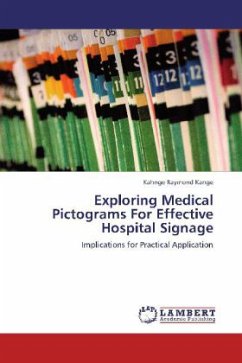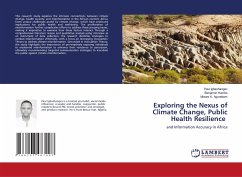
Exploring Medical Pictograms For Effective Hospital Signage
Implications for Practical Application
Versandkostenfrei!
Versandfertig in 6-10 Tagen
39,99 €
inkl. MwSt.

PAYBACK Punkte
20 °P sammeln!
Navigating a hospital environment without directional signs especially a large complex, can be a frustrating experience. For communities with recorded low literacy, this can degenerate to levels of stress when patients, caregivers and visitors do not understand inscriptions on even available signs. This book highlights the importance of pictograms in modern sign communication. It emphasizes the significance of bilingual directional signs using Hausa and English languages with supporting pictorial symbols capable of impacting visual meaning to the target audience (patients, caregivers and visit...
Navigating a hospital environment without directional signs especially a large complex, can be a frustrating experience. For communities with recorded low literacy, this can degenerate to levels of stress when patients, caregivers and visitors do not understand inscriptions on even available signs. This book highlights the importance of pictograms in modern sign communication. It emphasizes the significance of bilingual directional signs using Hausa and English languages with supporting pictorial symbols capable of impacting visual meaning to the target audience (patients, caregivers and visitors at Ahmadu Bello University Teaching Hospital, Zaria Nigeria). Two models of communication provided the support on which the medical pictograms and directional signs were developed;David K. Berlo s model of human communication and Charles Morris s model of the theoretical structure of signs and their significance. The concluding analysis is that a well-planned navigational or wayfinding sign system that incorporates standardized pictorial symbols, display fonts, and adheres to appropriate principles and elements of design would guarantee optimal directional needs in any hospital facility












